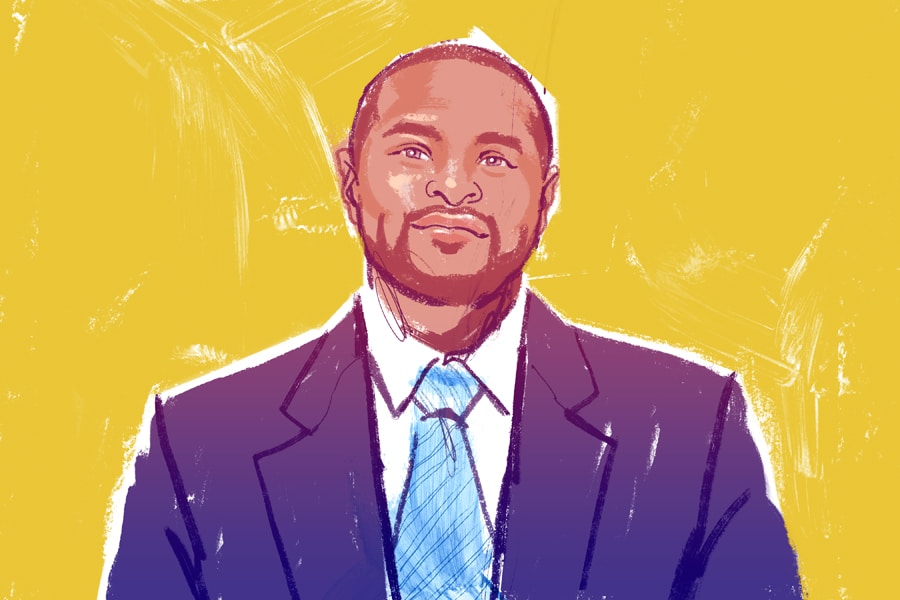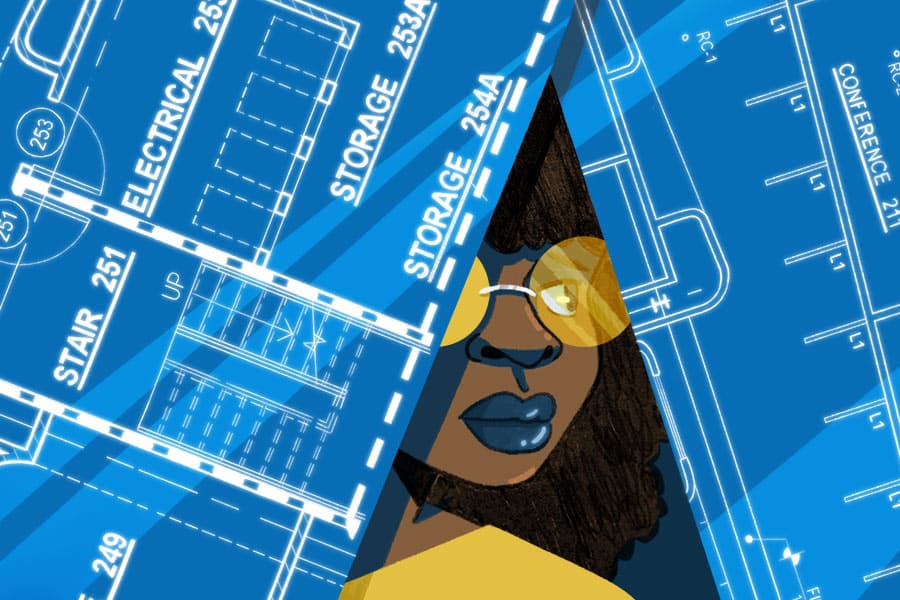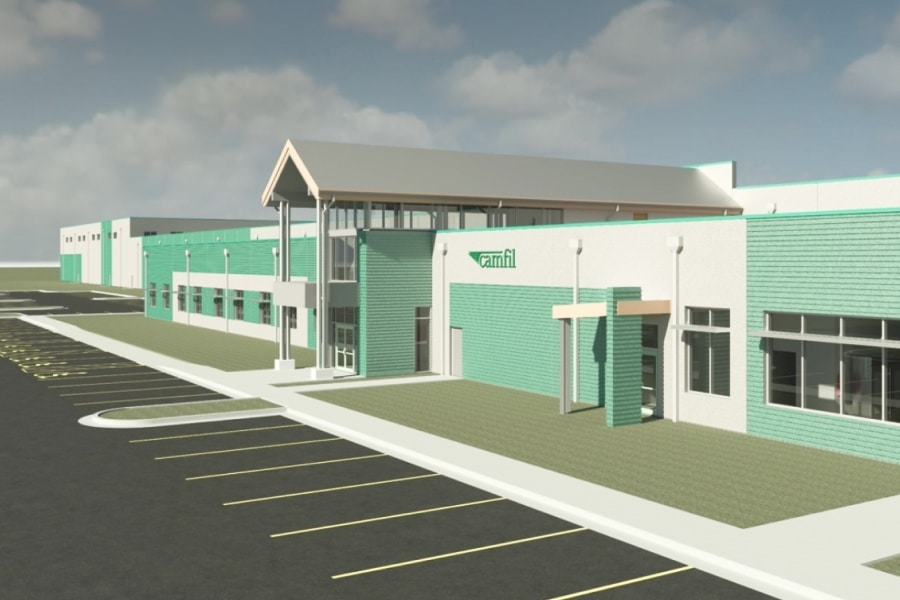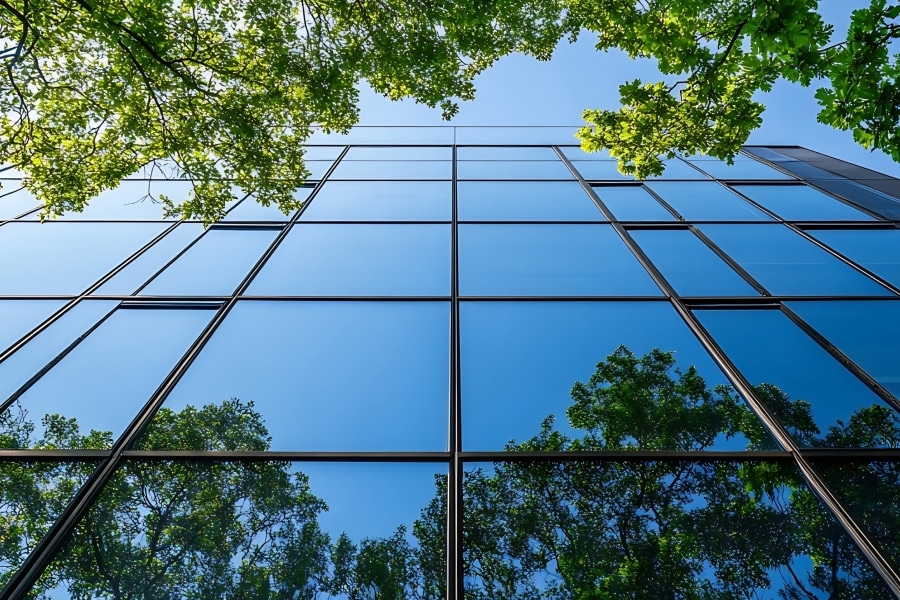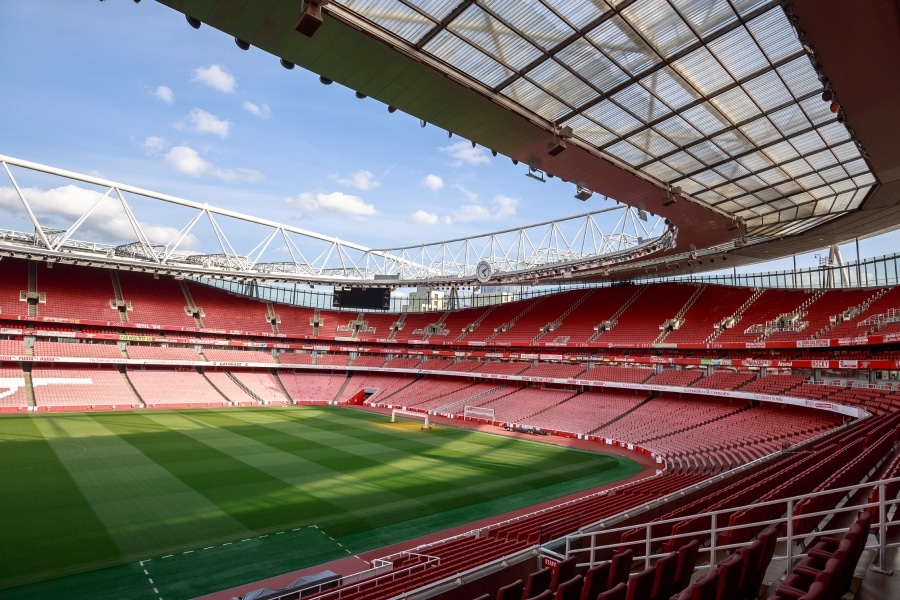Illustration by Jonny Ruzzo
Jonathan Moody, CEO of Moody Nolan, leads a powerhouse in the architecture field. Recently, the Columbus, Ohio, company was named “2021 Architecture Firm of the Year” by the American Institute of Architects (AIA). The national award is offered to one firm each year and is the most prestigious honor the AIA extends to firms.
Moody Nolan is used to being recognized, however. It remains the largest Black-owned architecture firm in the United States and the fifth-largest minority-owned business in central Ohio. Additionally, it is the highest revenue producer among architectural firms in central Ohio.
Ten years ago, Moody joined his father, Curt, at the firm his father started in 1982. Just over a year ago he assumed his current role when his father became executive chairman.
The Built Blog interviewed the younger Moody to learn more about his plans for the firm and his journey to leading the family business. Edited excerpts follow.
Built Blog: How did you decide on this field?
Moody: I was fortunate—I grew up in a house with an architect dad, so I had exposure to the industry. Also, my neighbor was a contractor who had built a successful construction company, and in high school I spent a summer working with his brick mason. People had told me, “If you want to be a good architect, you have to know something about how buildings are put together.” I didn’t actually tell anyone I was interested in architecture until early high school, when I had to declare a major, and when I started applying to colleges; that’s when I really had to say, “I want to be an architect.”
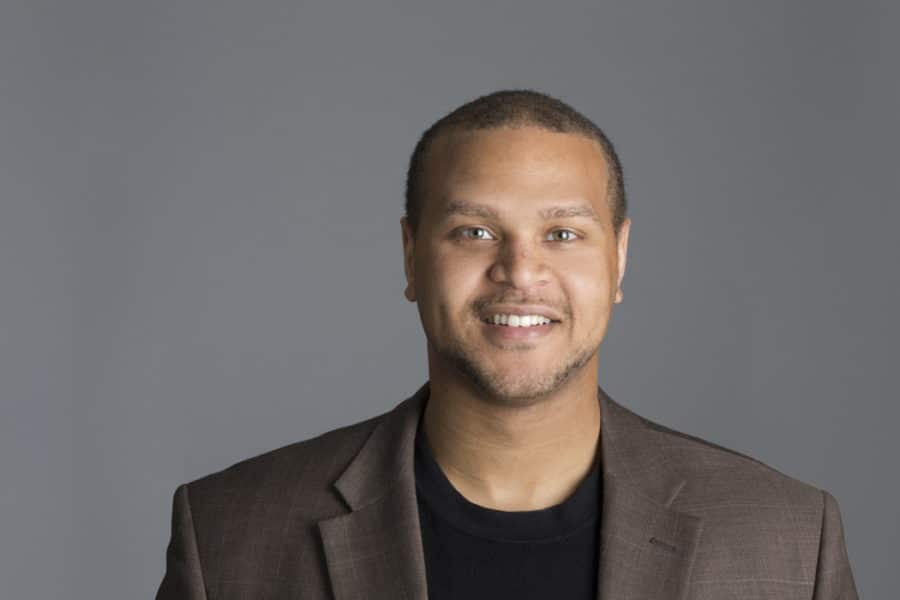
I applied to Cornell University and didn’t expect to be accepted, but I got a call from the football coach who said that my application looked good, so I went for a summer program before freshman year and jumped right into a five-year architecture program while playing football. I had narrowed my choice of grad school to Ohio State or UCLA, and then we got a foot of snow in Ithaca. I decided on L.A. After getting my master’s in architecture, I stayed in L.A. and worked for CannonDesign for a few years.
My dad called and asked if I was ever planning to move back, and I said, “Yes, sooner or later.” He said it should be sooner. I returned home and started as a designer in the design studio.
Built Blog: So you didn’t always think you’d work in the family business?
Moody: No, not right away. My middle brother is an engineer and my oldest brother is a football coach and a military guy. We never felt like we had to join the company, but all of us had to spend some summers interning at Moody Nolan in the print shop and the mailroom. That might mean organizing drawings, dealing with printing issues or even putting new furniture together.
Built Blog: What areas do you specialize in?
Moody: The irony is, we’ve coined the phrase that we’re diverse by design and are very intentional about doing a lot of different things. We’ve got everything in our portfolio from a 750-square-foot house to a 1 million-square-foot convention space. Our strongest markets are our student-focused facilities and higher education projects. But we also have great strength in health care, housing, corporate office work, civic work and K-12.
Built Blog: How has the industry changed in the past 10 years?
Moody: I’d say we’re at the beginning of things that we’d hoped for long ago, but now we’re taking some of these conversations seriously. The industry is ready to become more diverse today, and in the past year we’ve become a lot more intentionally driven by technology.
Also, over the past 10 years, we’ve really been focusing on sustainability. Those three things are really big drivers of our work. I hope what’s coming next is architecture really helping communities that are in need. In the past year we’ve seen people who could really use help. Our field really needs to build buildings that people have never had in their community.
Built Blog: What’s your favorite part of the job?
Moody: Attending a ribbon-cutting or ground-breaking. There’s so much of the nuts and bolts in putting a building together—to get the right people in the room, make decisions, rally people around vision and values, but everybody makes it about the building during the process.
When you have the ribbon-cutting, you see what we all knew from the start: it was never about the building. It’s always been about what that building represents, what people see in it, what they get out of it and how that building connects people. Then people attend the ribbon-cutting because of what that building means to them and you see how it brings them together. That’s always the best part.
Built Blog: What are your challenges?
Moody: Imperfection. On a person-to-person level, we acknowledge that people aren’t perfect and that they make mistakes, but in a very technically oriented profession like ours it often doesn’t feel like there’s room for people to be human. That becomes a problem, such as when something doesn’t meet people’s expectations or when someone makes a mistake. That’s a challenge.
I alluded to when you asked about how things have changed in the past 10 years and I said that we’re at the beginning of some of these things. I still think that there are so many things that the profession and the industry are not addressing yet or not addressing as well as they could. We’re at the beginning of doing that, but we still have a long way to go.
Built Blog: What’s one of your company’s greatest successes?
Moody: My dad had the idea two years ago to look at our corporate giving, and when he did he felt we were not making enough of an impact. We decided we were going to build a house for a family and give it away—that was the 750-square-foot house I mentioned. A nonprofit selected the family.
It was an amazing collaboration and connection, an investment of people who came together and said, “Hey, I can donate some furniture, I can donate some siding, I can donate some flooring,” or “I can donate some time and some service to make a huge difference in one family’s life.” That was the ribbon-cutting I spoke of. That project was an amazing success.
Built Blog: What’s a mistake you made starting out?
Moody: There was a client with a budget that I knew was not realistic. My mistake was in not telling them that, not being direct or upfront. It caused so many more problems than were necessary. You want to give people the world and when you can’t meet their expectations, not telling them isn’t the answer. I still make that mistake.
Built Blog: What’s the best advice you ever got about this industry?
Moody: I’m often in situations where I question if I’m qualified to be in the room. The advice I got was that basically, if you’re in the room, you’re there for a reason, and everything you know is all that you need to bring.
So often, people like me have not had the chance to be in the room and contribute to the conversation, and that’s so desperately needed. So often you get caught up in trying to be who you think other people want you to be when what they need most of all is for you to be yourself.

